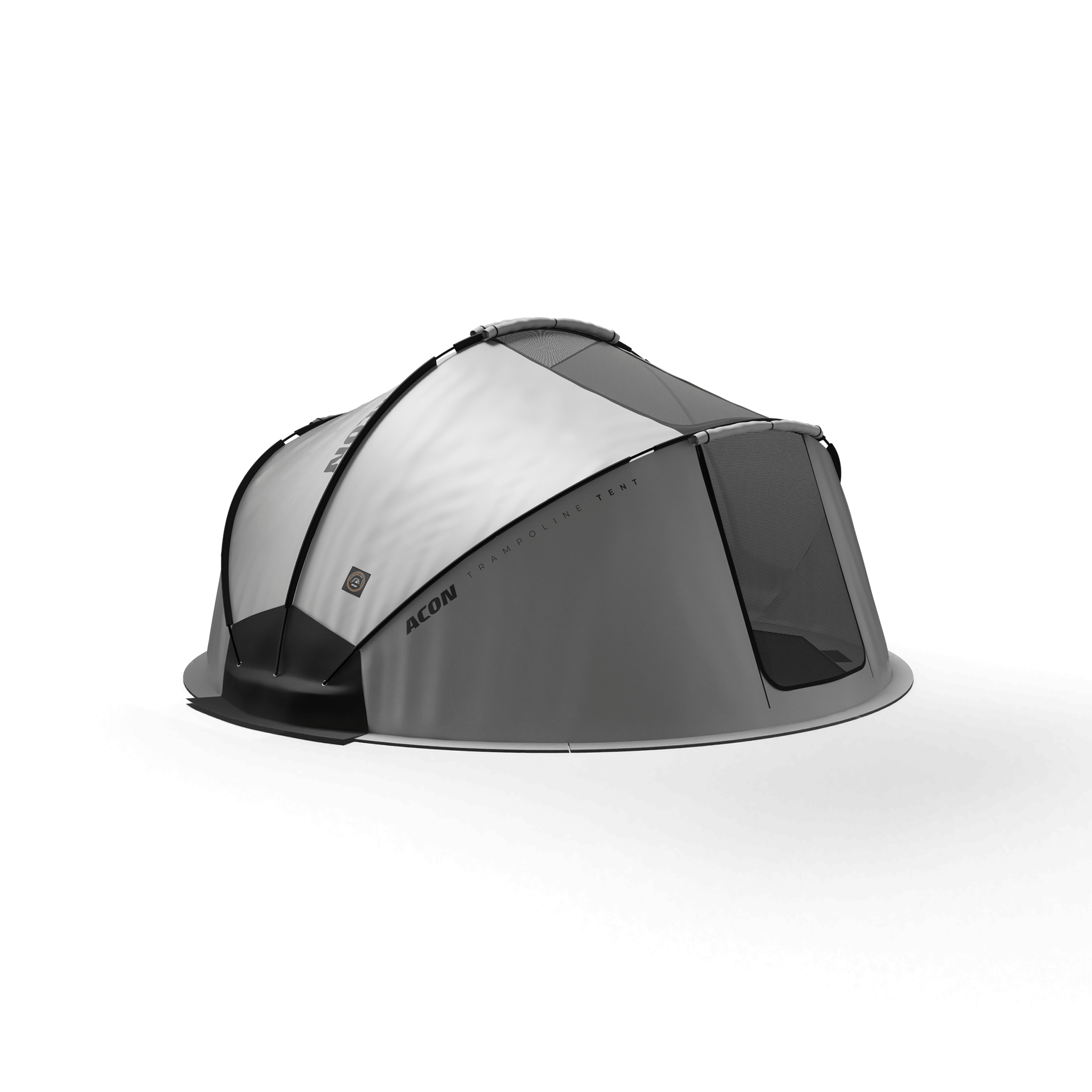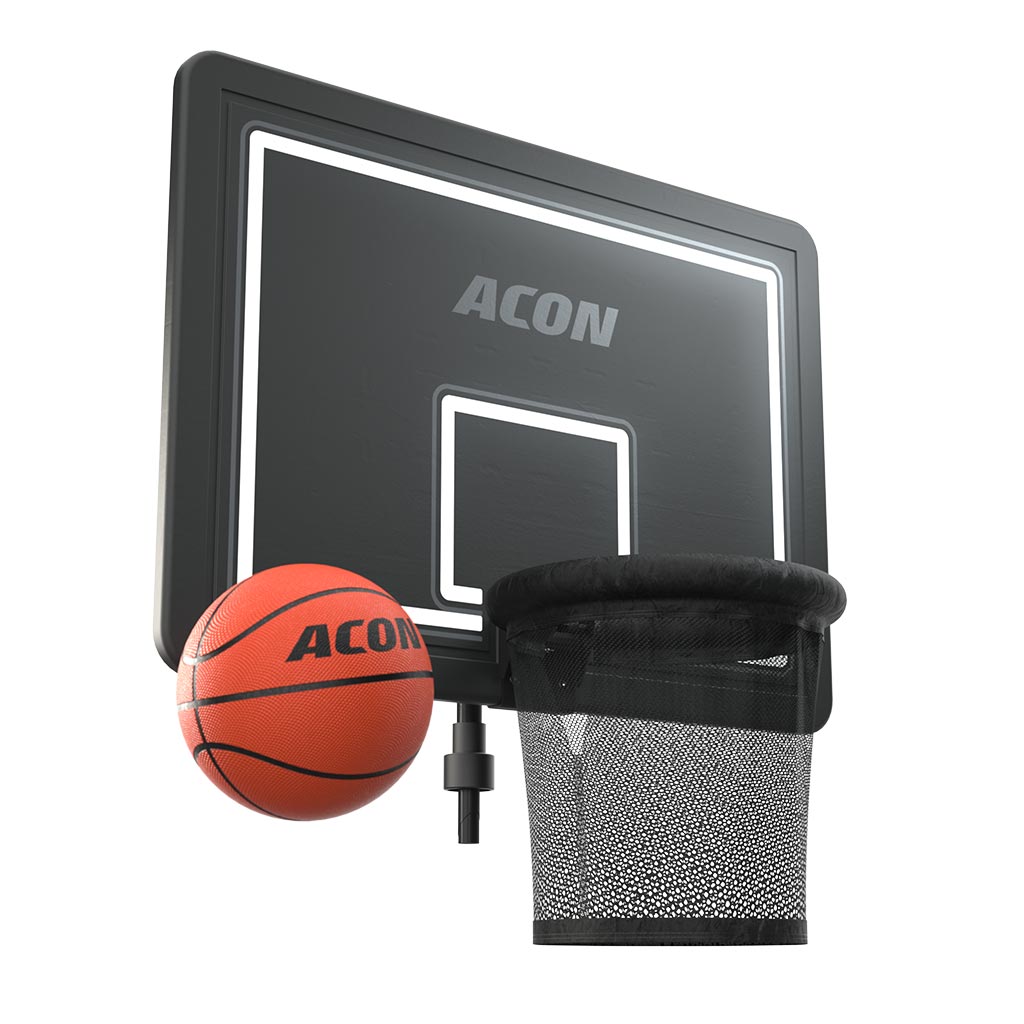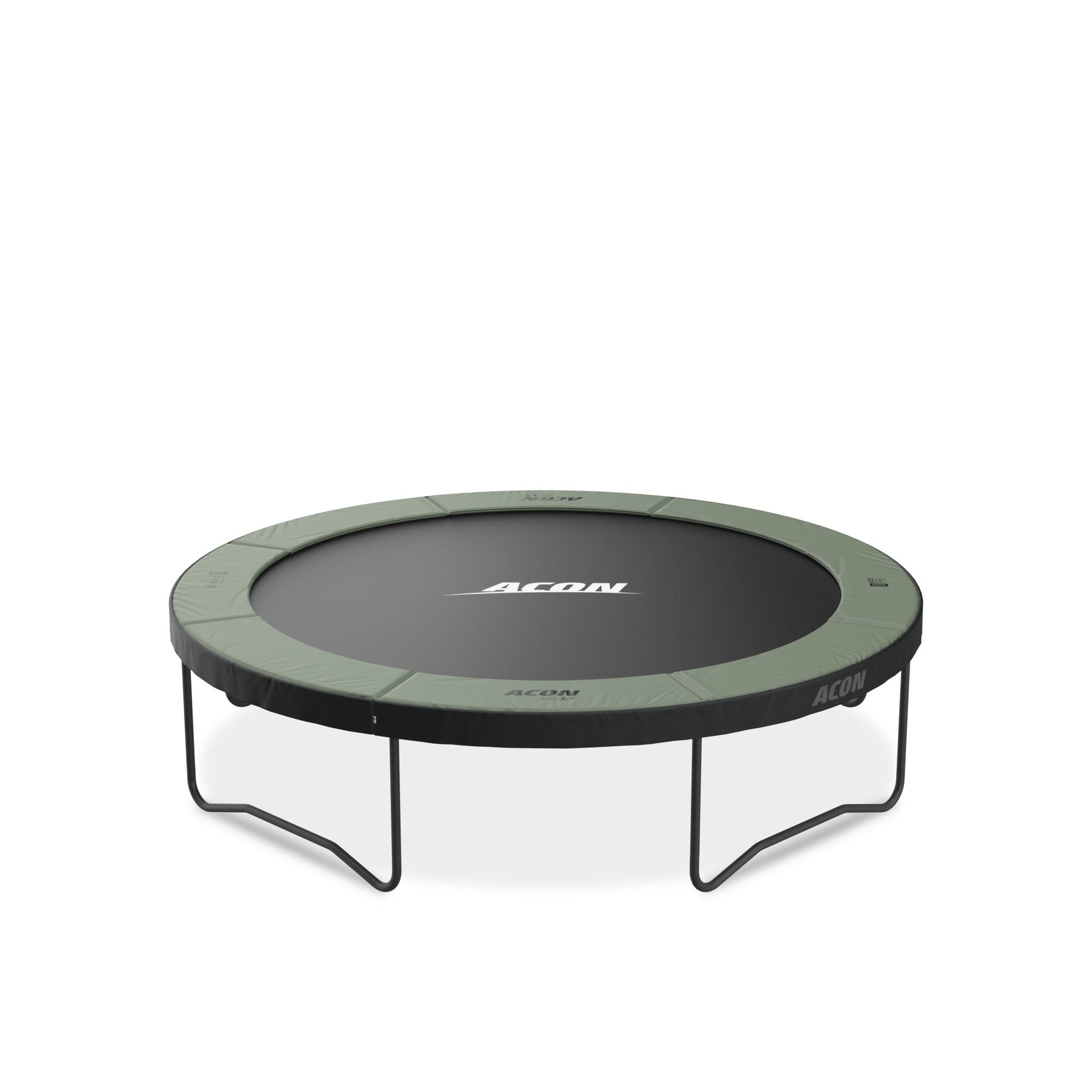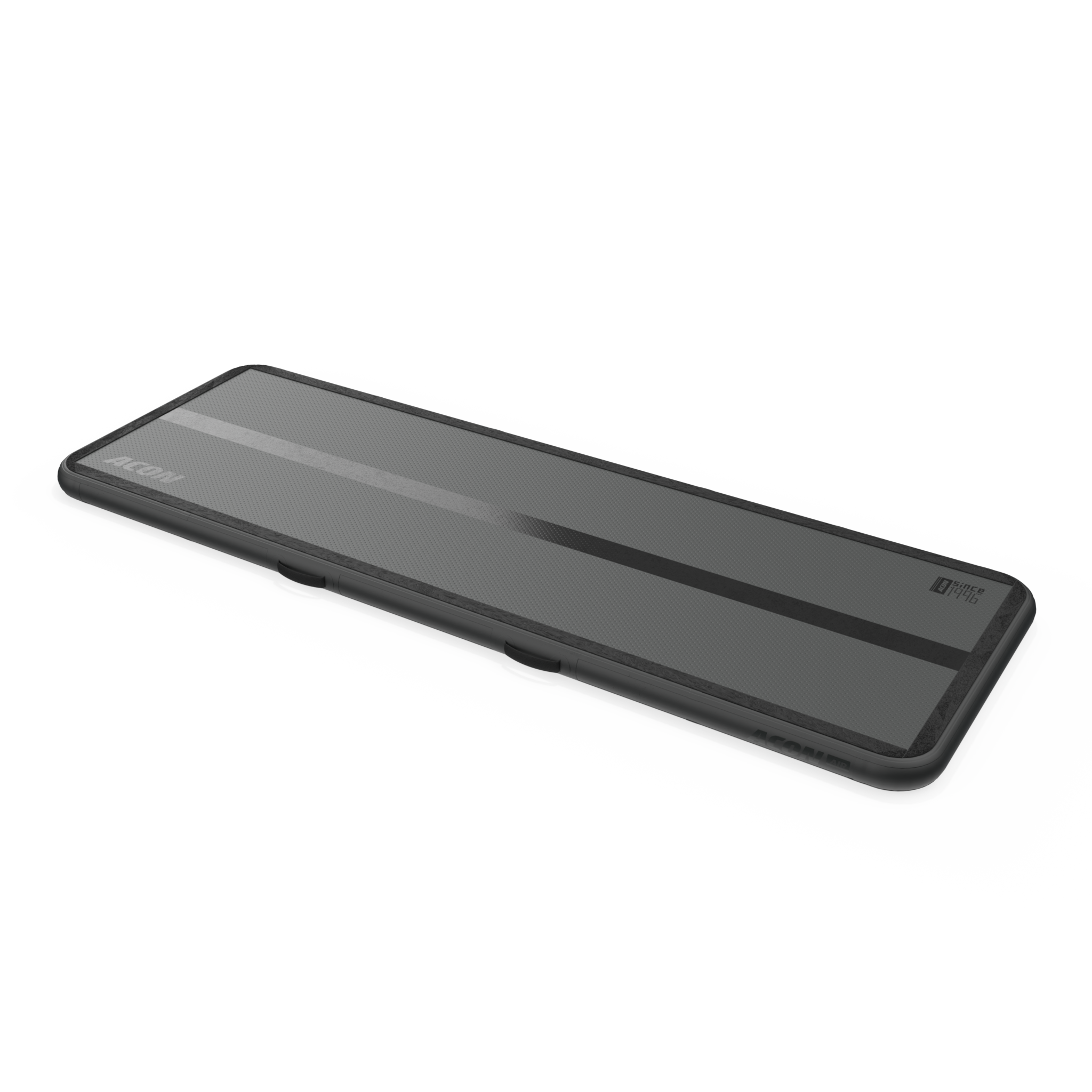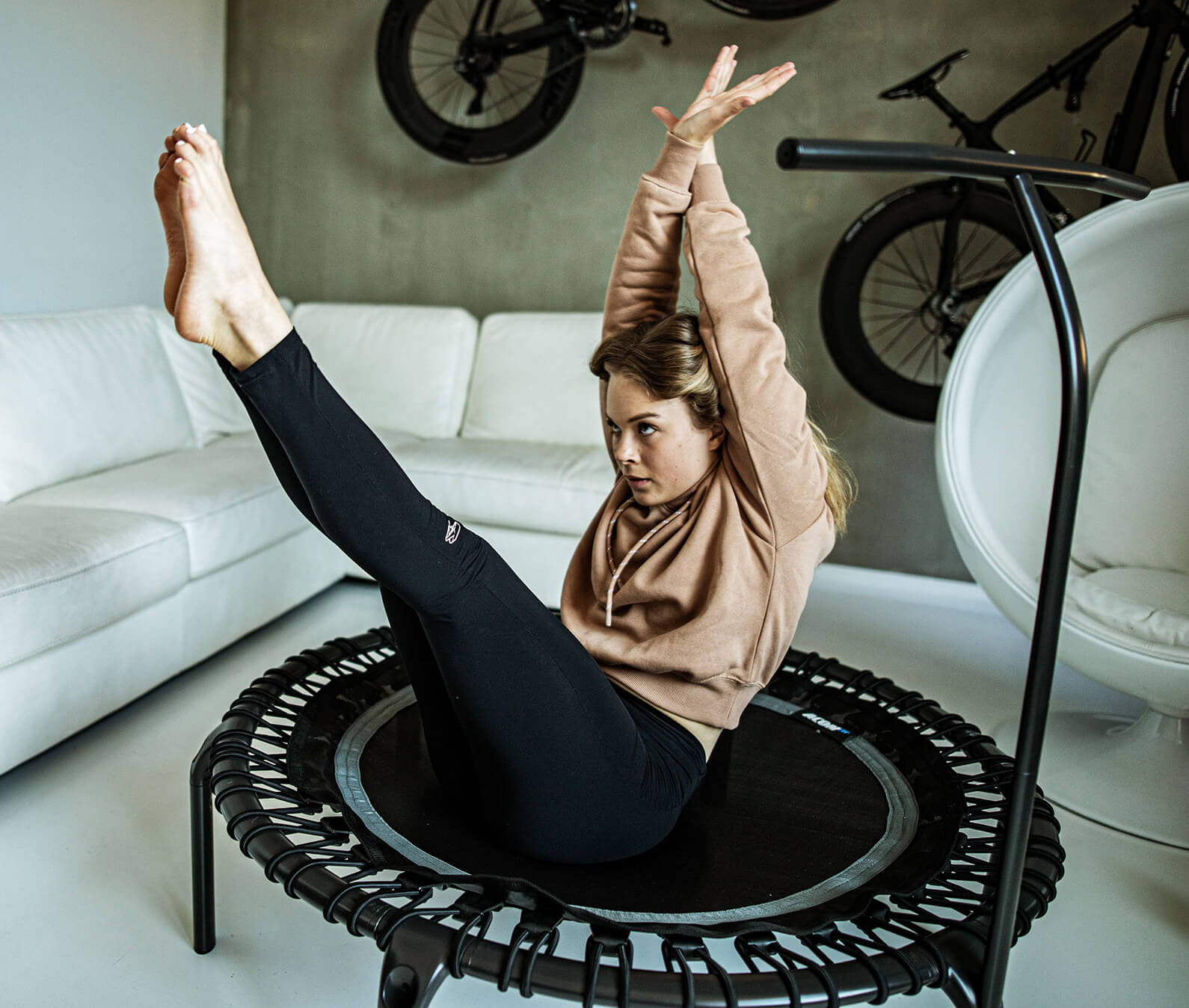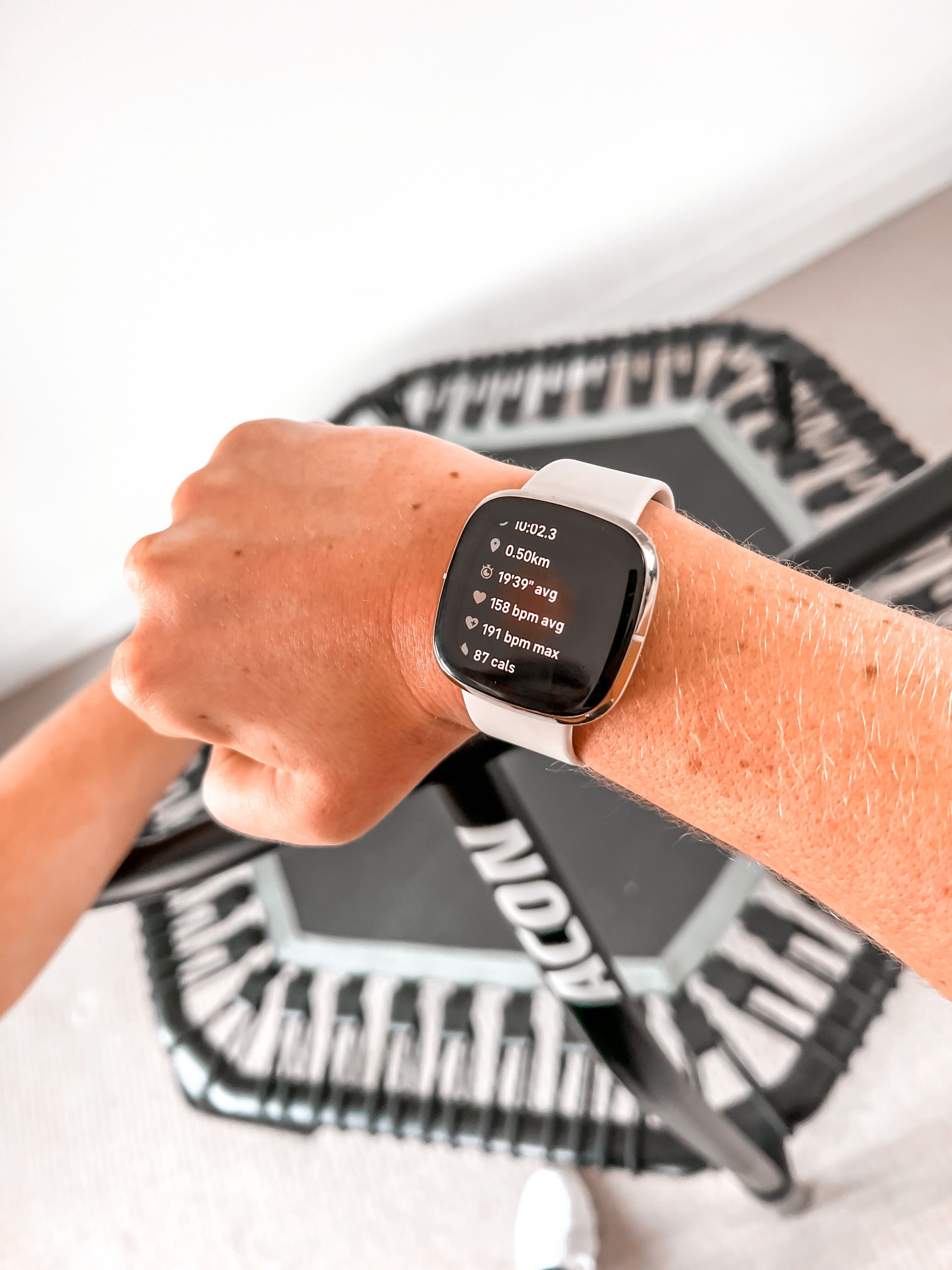Distributacon Inc.
1250 Wayzata Blvd E Unit 1127,
Wayzata, MN 55391, USA
Trampolines are a great way to get fit. Not only do they help to build up resistance – you can have heaps of fun while doing so! If you want to shake off stress or clear your head: a big bounce can help with that. It’s an example of the mind-body connection in action: a happy body equals a happy mind, and vice versa!
As you may already know, yoga is a wonderful way to connect mind, body and breath to feel more present. As modern life is increasingly filled with distractions, yoga and meditation simultaneously grow in popularity. It seems many of us are looking for ways to improve our focus, balance and ability to be in the here and now, if even for 10 or 20 minutes per day.
But did you know you can combine the fun of your trampoline with the calming effects of yoga to boost your workout happiness time? Let’s take a closer look at trampoline yoga and how it could benefit your health and wellbeing!
What is Trampoline Yoga?
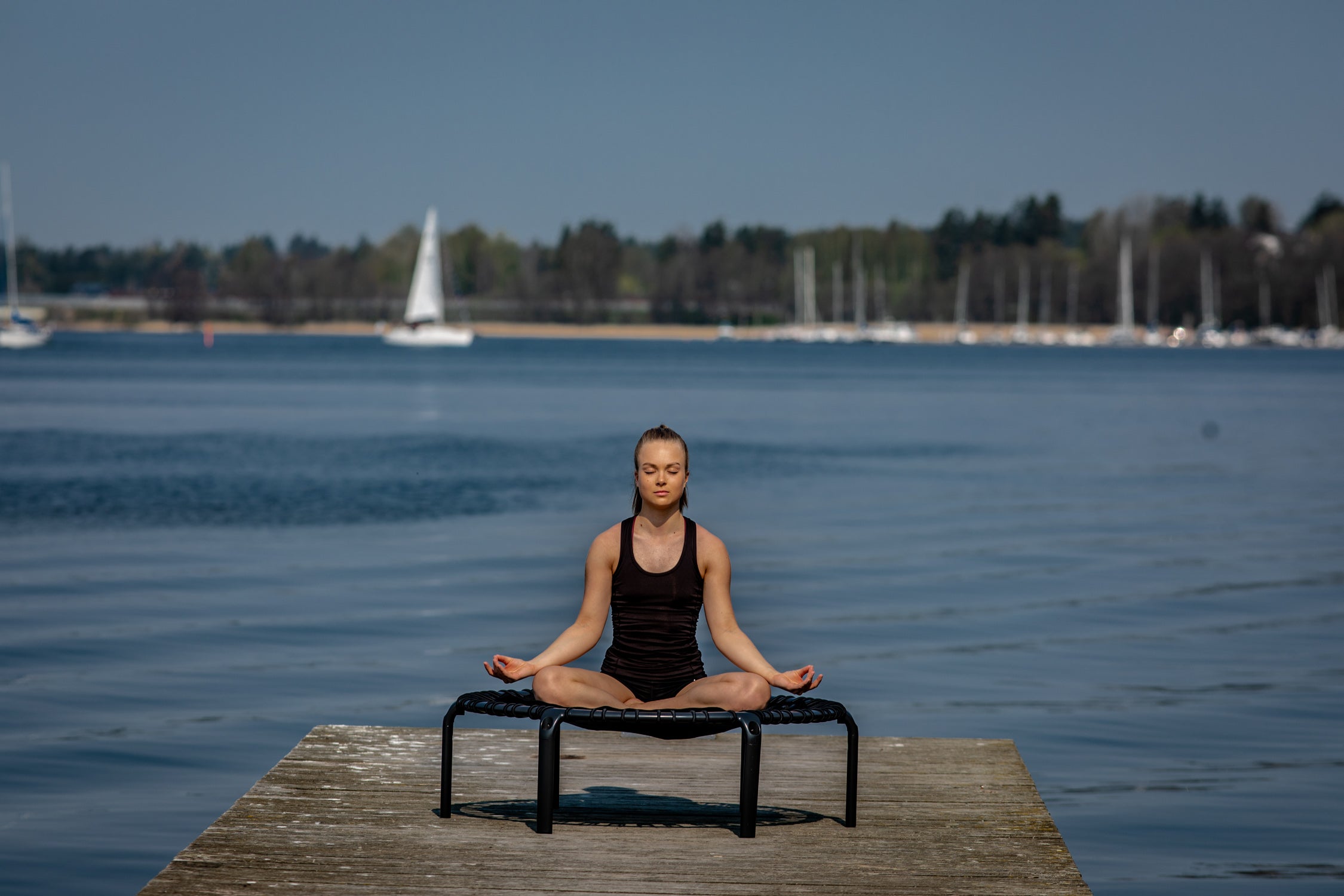
On their own, yoga poses and movements have meditative benefits besides how good it feels to stretch! Trampoline yoga adds another dimension to your yoga experience. By swapping the yoga mat for the trampoline or rebounder, you can deepen your yoga practice.
The bounce motion of the trampoline improves flexibility, helping you to relax even further into your postures. Practicing your stretches, jumps, postures, and breathing techniques on a trampoline ora rebounder means you get to do them the fun way.
What are the Health Benefits of Trampoline Yoga?
Trampoline yoga has many benefits for people who practice, not least because it’s an enjoyable way to tune into your body.
Low Impact Cardiovascular Exercise
Trampoline yoga is a low-impact exercise, that can get your heart rate up during the most intensive poses and practices. The trampoline bears the weight of your body, instead of your joints. This means it’s a great low-impact exercise, that reduces your risk of becoming injured. Holding your stretches and postures on a bouncy surface takes effort to balance, too.
Improved Coordination and Flexibility
Maintaining your balance on the trampoline takes effort and practice. The repetition of practicing yoga on a bouncy surface will help to improve your balance, coordination and flexibility over time. Improving these motor skills will benefit you in everyday life, giving you better agility and reflexes.
Yoga: A Great Choice for Most?
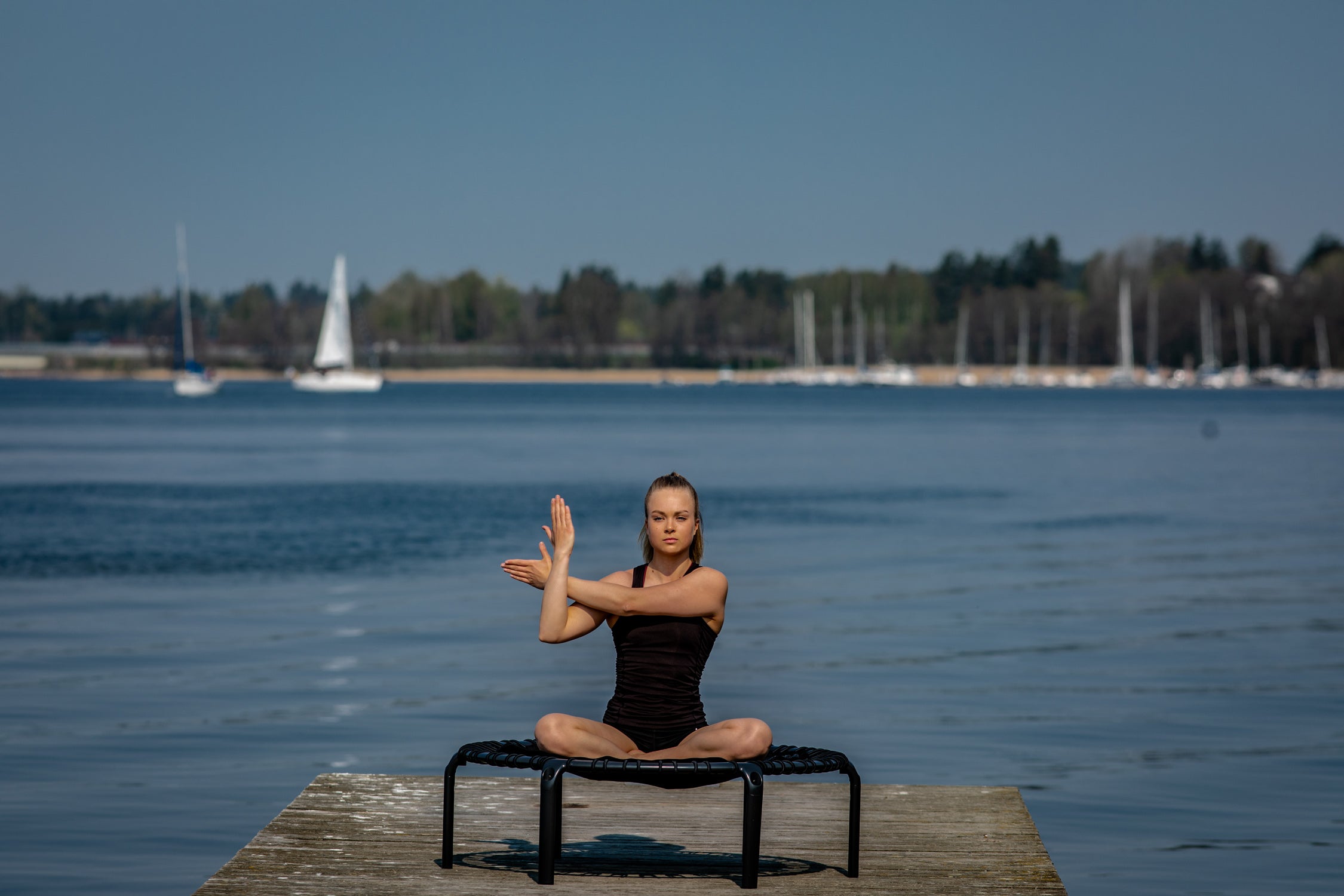
There’s a level of yoga to suit everyone, whether you’re a complete beginner or an advanced yogi. Yoga is a great choice for most people – we all need to stretch! Animals instinctively know when to stretch and move their bodies, but humans also have this need. Yoga is great if your lifestyle is more sedentary or you are seated in one place for most of the day. It’s also a wonderful way to look after muscles and joints following a workout. Here are some reasons why you should consider trampoline yoga.
Beginner Friendly
You don’t need to be an experienced yogi to try out trampoline yoga. We’ve included some postures further down that are great to try for beginners. It’s great if you can practice with a yoga mat beforehand, so you know what the correct posture feels like on solid ground. It’s not a requirement, though. Resting poses are great on the trampoline, as you really get to feel the support from the net. As you practice, let your body be the guide. You get to decide how deep into a pose your body can go. Using slow movements and paying attention to the breath, you can ease yourself into what feels most comfortable for your yoga level.
Easy on Joints
Yoga movement on a trampoline is gentle on your joints. This means it’s a great exercise for people with arthritis, joint issues or mobility problems. A trampoline is a softer landing, so instead of straining your ligaments, they’re massaged by the support action. The weight distribution when you use a trampoline minimizes the spinal impact too, so it’s safer for people who need to consider this.
Relieve Stress
Yoga brings attention to the breath, helping you to slow down and be present. This can help with stress and anxiety that occurs when our mind is racing, thinking about everything we need to get done. Taking even a 10- or 20-minute break to focus on the now with a trampoline yoga session can help to relieve stress. Deep yogic breathing also releases endorphins, the body’s natural feel-good hormones. After some trampoline yoga, you may feel a lot more relaxed and centered!
Fun!
It’s hard to take yourself too seriously while you’re on a bouncy surface, trying to stay still. Trampoline yoga will help to bring a more light-hearted approach to your day, because above all else, it’s a lot of fun. You might even start a trend when other people see how much you’re enjoying it.
Yoga Moves to Practice: How-To Guide
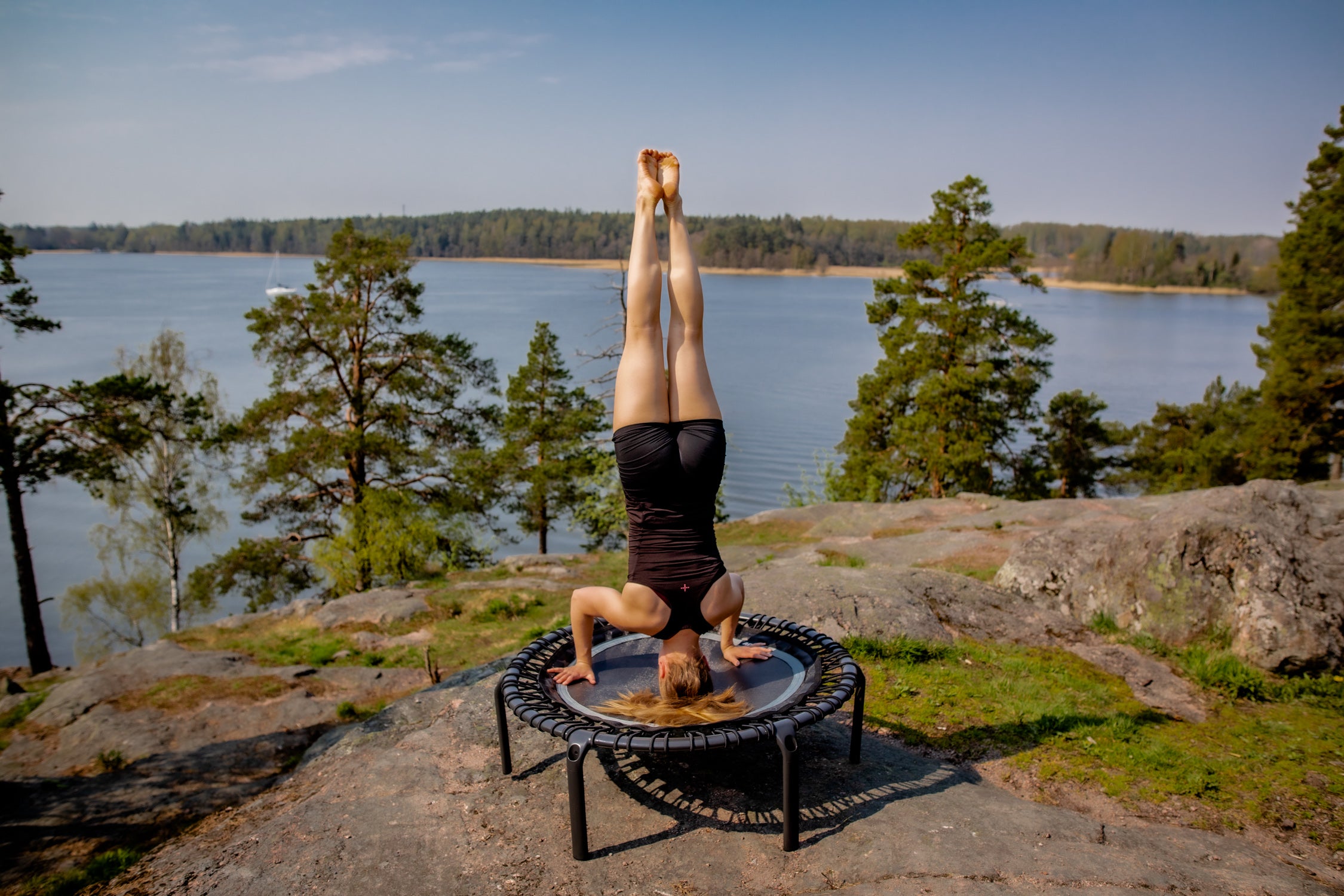
Before trying any advanced moves like the one in the image above, here are some basic yoga sequences for you to try on the yoga trampoline or a rebounder, whether you’re skipping your usual class or trying it out for the first time.
Table Top
Keeping your shoulders over your wrists and your hips over your knees, move onto hands and knees. Keep your back flat in this position. From here, you can practice “cat-cow” breathing movements. As you inhale, press into the ground as you look up, dropping the belly and spine. This is cow pose, helping to stretch the chest and torso. As you exhale, lift the belly and spine as you press the ground away from you – to resemble a cat taking a long, lazy stretch.
Downward-Facing Dog
Press your feet and hands into the mat. It’s ok if your ankles cannot touch the surface of the mat. Take a slight bend in the knees if needed, sending your hips high up into the air. Make sure to balance your weight into both hands and feet as you practice downward-facing dog, taking a few deep breaths here.
Tree Pose
A more advanced pose, tree pose may make you shake! From a standing position, bring your feet to touch. Raise your right leg, knee bent. Place the sole of your foot to your calf or inner thigh (if that’s in range for you). Careful – this is the hard part! Bring your hands to prayer in front of you, and see how long you can balance. If you’re more experienced, you might want to try lifting your hands above your head, like tree branches attempting to touch the sky.
Bridge Pose
Lying on your back, knees bent, bring your arms to rest either side of you. As you exhale, begin to raise your spine, vertebrae by vertebrae, off the mat using your arms and legs to support your weight. Inhale as you slowly drop back down, one vertebrae at a time. Practice for 5 second holds, if you can!
Savasana
Everyone’s favourite yoga pose: savasana. This works well on a bigger trampoline. Lie flat on your back, legs out long and arms out either side. Nothing feels better than feeling the support of the ground beneath you as you breath softly in and out. You can bring your right hand to your belly, left hand to your heart-space and focus on your breathing, if this feels good to you. But perhaps set a timer – this one is so relaxing, you might just nod off!
Equipment for Yoga
Yoga movements help to improve your blood circulation and the movement of lymphatic fluid in the body. They can boost your metabolism and improve your lean muscle mass, which helps to burn fat while at rest, as well as simply adding an extra pep to your step!
Rebounders: Boost Balance as you Bounce
Rebounders are smaller sized trampolines that are designed for working out. Yet, you can utilize any rebounder as a yoga trampoline, as long as its jump zone is big enough for yoga. An Acon rebounder gives silent gym performance while still giving you our best bounce. As the bounce is silent, it’s also perfect for yoga practices. We recommend opting for ACON’s hexagonal rebounder model for the best trampoline yoga experience. See our hexagonal rebounder options by clicking here.
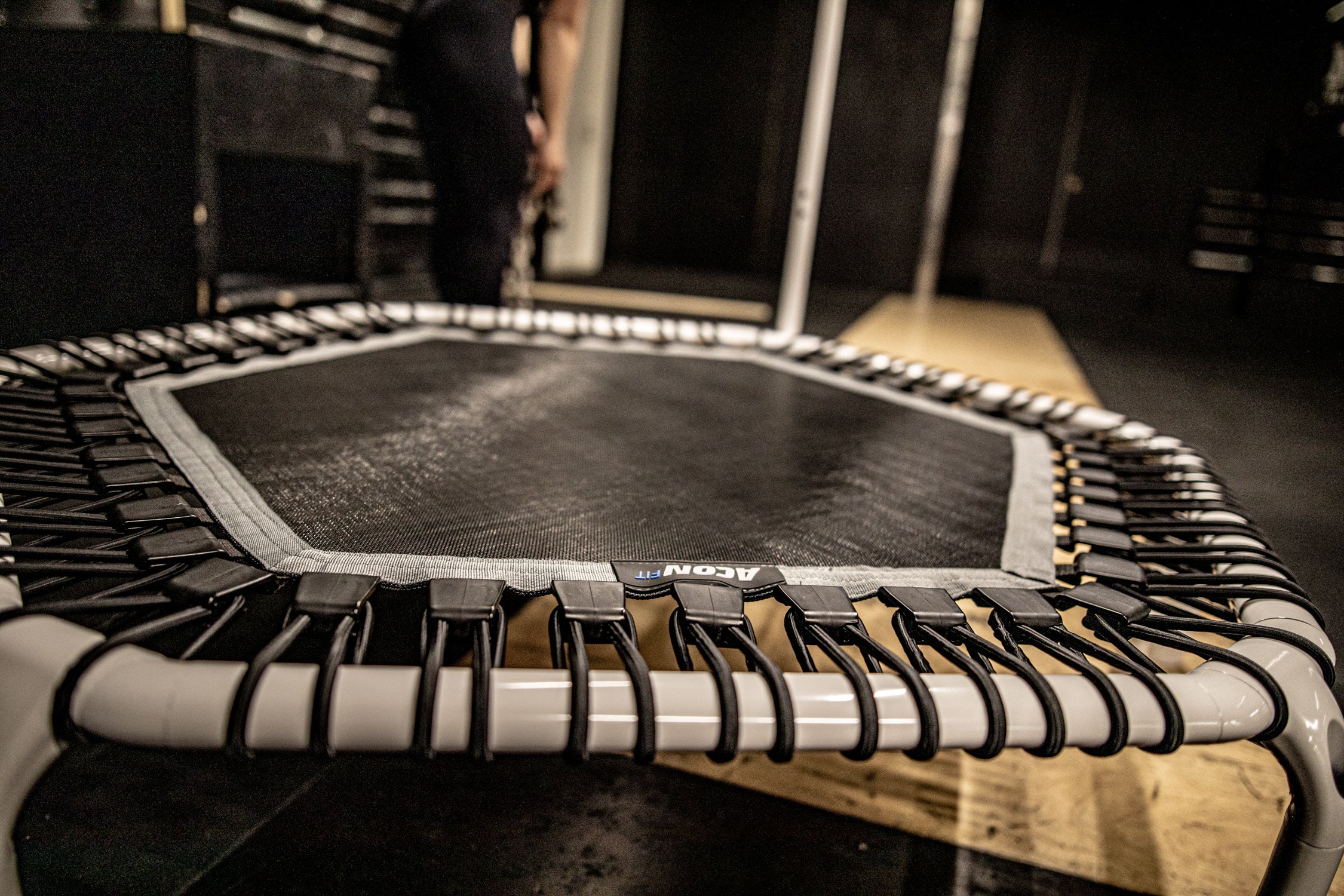
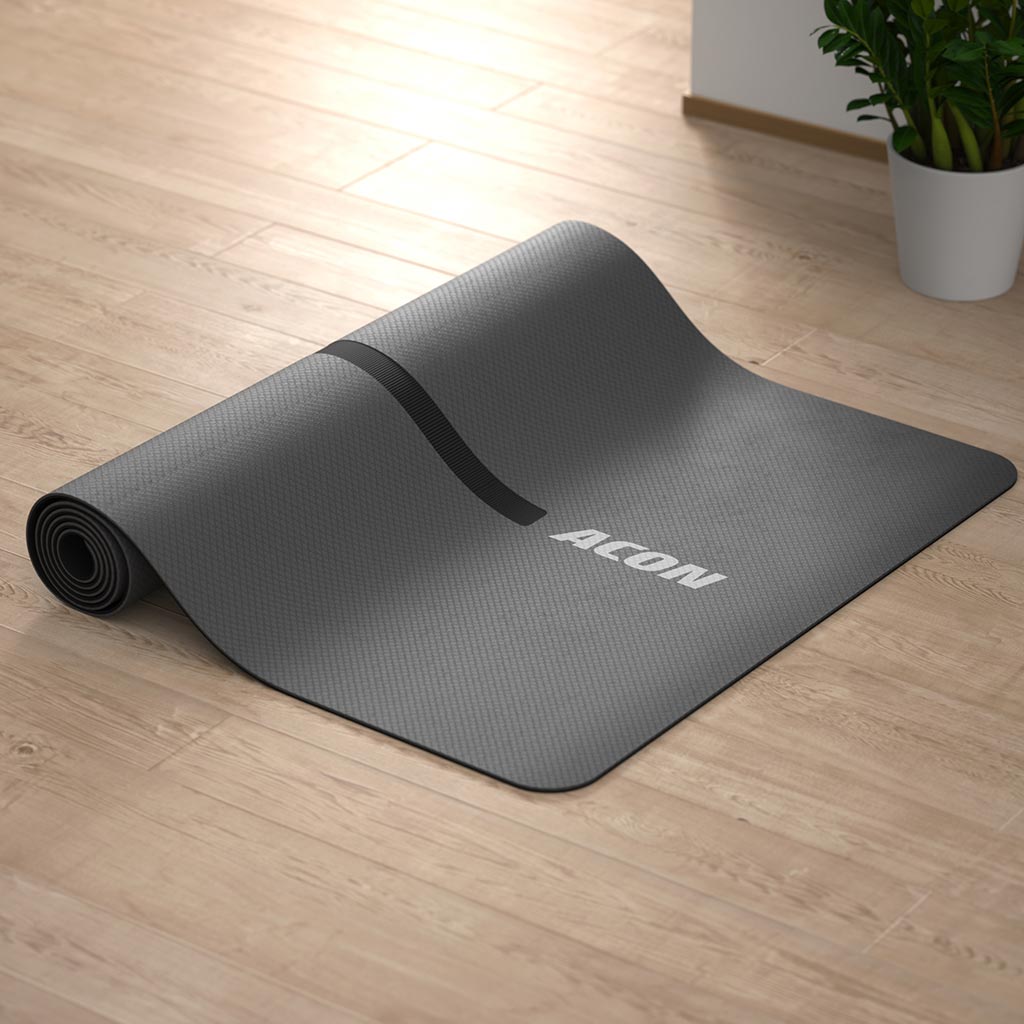
Yoga Mat: The Forever Classic
For those who want to practice your poses on solid ground before attempting them on the trampoline, we’ve got a mat for that. Acon’s eco-friendly yoga mat features the same slick design as our trampolines, while the water-resistant material is easy to clean. Take it to your favorite hot yoga class without worrying about sweat or moisture sinking in. It comes with a convenient sling strap for easy transportation. Read more about our mat specs here.
Bounce Your Way to Better Health & Fitness
Better cardio fitness and well-being are a hop, stretch and jump away on a tr,mpoline or rebounder. As always, remember not to push yourself beyond your capability. You know what your body can do, and it will let you know its limits. Here are a few safety tips to keep in mind.
Safety tips
One of the most important safety tips is to practice on a safe trampoline. Acon’s products are premium quality, sturdy and durable, made to last a lifetime! They are a good option for trampoline yoga, as well as for any rebounding exercises.
Wear loose-fitting, comfortable clothing to practice trampoline yoga. Non-slip socks are also a good idea if you have them.
When practicing yoga, make sure your form and posture are correct when holding the poses. It’s good to practice in a room with a mirror when you’re beginning, or on a mat if that’s not possible, so you feel confident practicing your yoga on a trampoline.
Challenge yourself to try yoga on a trampoline!
Unwind, stretch and shake out the day in a fun way! Read more about the differences between trampolines vs rebounders, see examples of trampoline workouts, or go directly to see our selection of high-quality fitness trampolines by clicking the button below.


